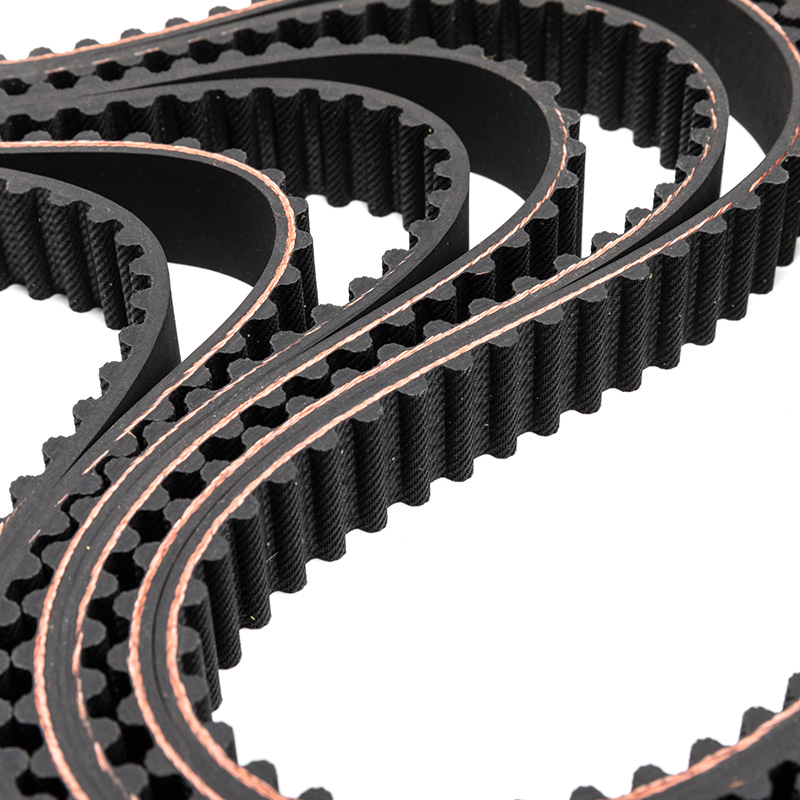Regular Inspection: Establish a checklist covering all critical inspection points, including belt condition, tension, pulley alignment, and overall system integrity. Document inspection findings systematically, noting any anomalies or areas requiring attention. Consider utilizing digital inspection tools or condition monitoring systems for enhanced efficiency and accuracy.
Tension Adjustment: Invest in precision tensioning tools, such as tension gauges or tension meters, to ensure accurate and consistent tensioning across all V-Belts. Develop standardized procedures for tension adjustment, taking into account factors such as belt type, size, and operating conditions. Consider implementing a proactive tensioning maintenance schedule based on predictive analytics or condition monitoring data to anticipate and address tension-related issues before they escalate.
Alignment: Prioritize precision alignment of V-Belt pulleys to minimize belt wear, vibration, and power losses. Utilize advanced alignment technologies, such as laser alignment systems, to achieve sub-micron accuracy in pulley alignment. Conduct comprehensive alignment audits using specialized equipment to identify and correct misalignment issues proactively. Implement proactive measures, such as using self-aligning pulleys or tensioning devices, to maintain alignment integrity over time. Integrate alignment verification into routine maintenance procedures to ensure ongoing alignment accuracy.
Cleaning: Develop detailed cleaning protocols specifying the use of appropriate cleaning agents, tools, and techniques for removing contaminants from V-Belts and pulleys. Consider implementing automated cleaning systems or conveyor belt cleaners for large-scale operations to streamline the cleaning process and ensure consistent results. Regularly inspect cleaning equipment for signs of wear or malfunction and perform preventive maintenance as needed to optimize performance and reliability.
Lubrication: Establish a lubrication management program encompassing V-Belt drive systems to minimize friction, reduce wear, and extend component life. Select lubricants specifically formulated for V-Belt applications, considering factors such as temperature range, load capacity, and compatibility with belt materials. Utilize automated lubrication systems or centralized lubrication stations for efficient and precise lubricant application, minimizing the risk of over- or under-lubrication. Monitor lubricant condition regularly through oil analysis or lubricant sampling to detect contamination or degradation and take corrective action as necessary.
Temperature Monitoring: Deploy advanced temperature monitoring technologies, such as thermal imaging cameras or infrared sensors, to monitor V-Belt and pulley temperatures in real-time. Integrate temperature monitoring data with predictive maintenance systems to identify potential issues, such as overheating or excessive friction, before they cause equipment downtime or failure. Conduct regular thermal inspections during planned maintenance intervals to identify trends or patterns indicative of underlying mechanical or operational issues.
Replace Damaged Belts: Implement a proactive belt replacement strategy based on condition-based monitoring, predictive analytics, or historical performance data to optimize belt replacement intervals. Establish clear criteria for determining when a belt should be replaced, considering factors such as wear, damage, tension loss, and operating hours. Develop a comprehensive inventory management system to track belt usage, replacement history, and spare part availability.
Automotive Timing Belts

Industrial V-belt is a mechanical power transmission belt that is used to transfer power from one device to another through the use of pulleys. It is shaped like a V and is made from a durable rubber or synthetic material.



 English
English 中文简体
中文简体

 View More >>
View More >> View More >>
View More >> View More >>
View More >> View More >>
View More >> View More >>
View More >> View More >>
View More >> View More >>
View More >> View More >>
View More >> View More >>
View More >> View More >>
View More >> View More >>
View More >> View More >>
View More >>
